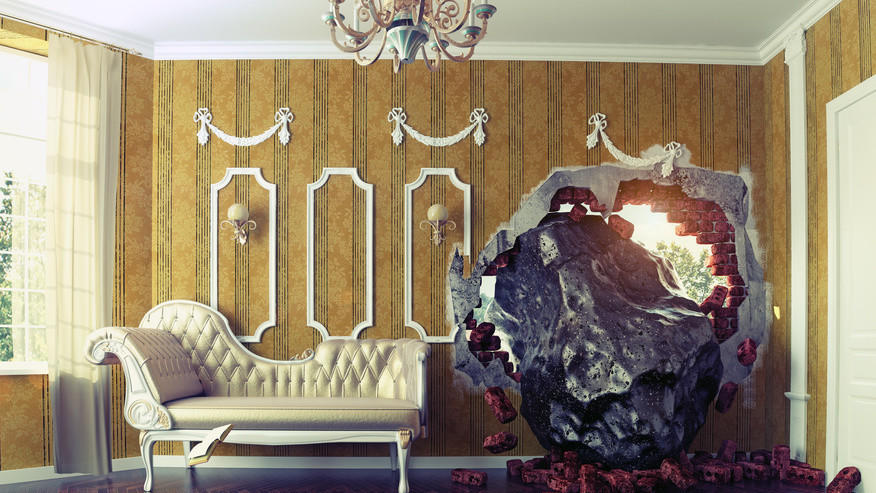This article originally appeared in the La Jolla Light
Urban development is rethinking not only housing but the entire way we live. With a focus on making urban centers actual centers of residents’ lives, not only is the city center becoming a great place to live, it’s becoming the ideal spot to set up business.
However, urban redevelopment isn’t some revolutionary mode of thinking; in fact, it’s more like going back—way back—to ancient Greece. Apple has talked about their stores as being like “agoras,” the gathering places of 2,000 years ago, the centers in which people came together near where they lived. They shopped, they exchanged stories, and they learned the latest local gossip as well as information on what was going on with the state. And that is what urban redevelopment aims to do in this massive transformation back to becoming a pivotal neighborhood center.
With mixed-use housing, people can work where they live and live where they work, reducing commute, potentially even the need for a car. They can avoid the frustration of getting home only to recall the forgotten item on the grocery list. In mixed-use housing, the basic needs are a flight of stairs or an elevator ride away.
These new urban agoras build on a sense of community loyalty, something a lot of power players in retail have been aware of in the last few years. With online retail cutting into much of the brick-and-mortar business, causing an epidemic of shuttered windows throughout cities, and coupled with soaring rents, much of the prevailing mode of business that we knew up to the 1990s is likely over.
But this isn’t necessarily the case in places with urban renewal. Businesses getting in on the ground floor, literally and metaphorically, have great opportunities to get high returns on their investment. And with this new focus on the “agora” lifestyle, retailers are focusing on the store experience and the services that can be provided in person, rather than focusing on product-pushing alone.
We see evidence of this in the many pop-up shops and spaces for local artisans as well as other maker spaces that are drawing a trusted local following. These really are cities of the streets, highlighting the social exchange via walkability.
What is the fate of the urban center? Can it grow out of control?
This is where local investment comes in. There are several ways that urban redevelopment and retail will trend, and what businesses go in and the people who support these neighborhood spaces will determine which trend takes hold.
- Mutable Markets—these are the temporary shops, the pop-ups, which serve to create a following and then move on to the next location, where hopefully word-of-mouth will precede their arrival. These shops may become the business norm, especially in the face of exorbitant rents.
- High-end Gentrification—this is the upscaled model, in which high-end retailers start to offer increasingly personalized retail experiences. These are often stores that promote lifestyle brands, the kind that look good on Instagram accounts and YouTube celebrity pages. They can operate at a loss, while using predictive algorithms to create increasingly individualized experiences. The risk of this is that gentrification will lead to even higher rents and rapidly change the dynamic of a neighborhood, which can benefit some groups but certainly not a majority. This is less “agora” and more private club.
- Community Commons—this focuses around the coffeehouse-as-living space, the office café, and people working independently and based on a digital economy taking advantage of potential tax penalties for street-level vacancies, which would allow for leasing of ground-floor retail space to common areas. This also includes community organizations as well as health centers for seniors or day care centers for children. These common areas would be determined by the needs of the community; however, they don’t always pose inviting street fronts if they don’t cater to the entire community.
- Indie Guilds—this is the “buy local” movement, the low-cost start up entrepreneurial opportunity made up of small, independently owned and operated craft businesses that benefit from lower rents and loyal followings. The guild comes from a share of infrastructure, smaller businesses banding together, sharing equipment costs and rent as well as space. Imagine if Etsy were brick-and-mortar, and you’ll get the idea of the Indie Guild.
What all these opportunities suggest is the importance of a community-involved urban redevelopment plan, including local investors who know and understand the community’s needs. Mixed-use urban development isn’t going away, but in an age of increasing bubble isolation, these gathering places are a means for people to reconnect on the neighborhood level while providing ease of access and improved quality of life.
Next month, we’ll take a look at how the use of technology is revolutionizing construction projects, including urban infill and mixed-use development projects.
At Murfey Company, we’re dedicated to whole community improvement and will work with you on your investment into urban development with an eye toward community sustainability. For more information, visit us at www.murfeycompany.com.










